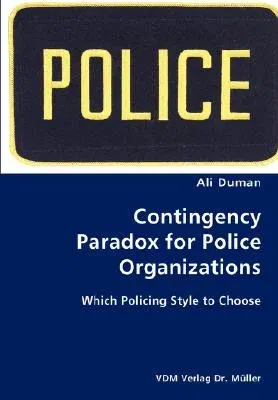Ali Duman
(Author)Contingency Paradox for Police Organizations- Which Policing Style to ChoosePaperback, 21 August 2007

Qty
1
Turbo
Ships in 2 - 3 days
In Stock
Free Delivery
Cash on Delivery
15 Days
Free Returns
Secure Checkout
Print Length
128 pages
Language
English
Publisher
VDM Verlag Dr. Mueller E.K.
Date Published
21 Aug 2007
ISBN-10
3836425769
ISBN-13
9783836425766
Description
Product Details
Author:
Book Format:
Paperback
Country of Origin:
US
Date Published:
21 August 2007
Dimensions:
24.41 x
16.99 x
0.69 cm
ISBN-10:
3836425769
ISBN-13:
9783836425766
Language:
English
Location:
Saarbrucken
Pages:
128
Publisher:
Weight:
217.72 gm

